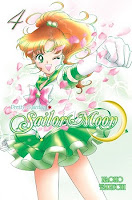If you recall the bygone summer of 2011, you may remember that I was optimistic -- though cautiously so -- about DC's New 52. The new creative teams and continuity freedom allowed with the relaunch provided some hope that the turgid superhero universe inhabited by Superman, Blue Devil, Porcupine Pete, Geo-Force, and Batgirl would be reborn into something more vibrant. Creators could all all do their own powerful versions of these characters. We could have seen a line-wide effort that would match the continuity-free heights of "All-Star Superman" or "Batman: Year One," or if not that, then at least we would get a line-wide equivalent of the confident streamlining and rebranding that came with Geoff Johns's earlier-last-decade revamp of "Green Lantern." - Timothy CallahanReally? In light of all of DC's multiple line-wide relaunches and where they eventually ended up? That's not just being cautiously optimistic. That's desperately hoping that an already overused top-bottom approach will still yield even greater rewards in individual creativity.
A year latter, and Timothy deems only three of the initial fifty two titles worth following. His assessment of Zero Month is just as sobering:
So there you have it. Nine good-to-really-good comics in a stack of 54. And only two that I would actually recommend to anyone who wasn't already heavily into the DC catalog. (emphasis mine)
Chris Sims doesn't find the attempted gang-rape in Sword of Sorcery #0 to be very well written, or appropriate to the the title:
The more I thought about it, though, the more infuriating it was, and a large part of it was that this was the last book where I expected it to crop up yet again. As goofy and fannish as it may seem, I feel like they suckered me into getting excited about it, presenting it as a genuine attempt to draw in new readers and experiment with genres that they hadn't tried for a while. Instead, it's just the same thing they always do. They have once again shown themselves to be the Lucy Van Pelt of rape comics, pulling that football away just as soon as you hand over four bucks for the privilege of trusting them not to.Sword of Sorcery was the one title I was looking forward to reading J. Caleb Mozzocco has his own reaction. Read the comments that follow.
David Brothers and J. Caleb Mozzocco rip into the sycophantic Laura Sneddon article on Grant Morrison.
Speaking of Morrison, Greg Rucka was set to write Wonder Woman: Earth One before he was kicked off the project to make room for the Scot. That was too much for him. And thus he became the latest in a line of high-profile creators to cut their ties with DC.
Geoff Johns is one of the architects of the New 52. Matthew Brady is here to tell you that his Green Lantern comics are pure garbage.
Nagraj Rules!
Ah, the Nineties. Remember the massive shoulder pads? And Stan Lee, what a shyster.
Hail to the King, Jack Kirby.
Heidi MacDonald on why DC and Marvel consistently fail to show much interest in reaching beyond their man-child targeted demographic.















